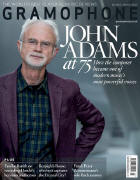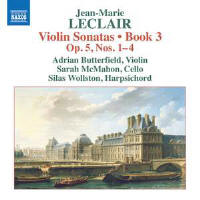Texte paru dans: / Appeared in: |
|
|
Outil de traduction |
|
|
Reviewer:
Charlotte Gardner Famed for his Italianate high virtuosity but equally for employing it only with the utmost taste and grace, and for a career which at its zenith made him the toast of kings but which ended as failed opera composer stabbed to death on his own doorstep, Jean-Marie Leclair (who began his career as a dancer) arguably rose even higher and fell even lower than his virtuoso violinist-composer contemporary Vivaldi. The result is a body of music that on the one hand gives violinists plenty to get their teeth stuck into, but on the other presents a conundrum in terms of what exactly the ratio should be gramophone.co.uk between elegant French restraint and warm-blooded emotion. There was certainly plenty of warmbloodedness from Leclair as his wrote his 1734 third book of violin sonatas, because it was dedicated to King Louis XV, who the previous year had appointed Leclair Director of the Music of the Chapel and the Apartments – although things would quickly turn pear-shaped with that one, Leclair dramatically resigning in 1736 when his distaste over job-sharing with another violinist became too much to stand. These expressive sonatas, though, appear to display a grateful Leclair pulling out all his violinist stops for his king, their nouveautés including flute no longer being named as an alternative to the violin, an upping of the virtuosity from the previous two books, the use of variation form in three of the final movements (a device that would become increasingly popular as the century progressed), and the first continuo line expressly for cello rather than gamba (the Ciacconna of No 4). Adrian Butterfield here does an exceptionally stylish job of capturing Leclair’s tasteful elegance, and with a nice spring to the dance rhythms; likewise the Frenchman’s famed neatness and sweetness. Plus, it’s all attentively matched and supported by Sarah McMahon and Silas Wollston. It does all feel very polite, however, both in overall expression and with regard to the folk elements – far more so than you hear on Butterfield’s own Op 1 sonatas recordings with Laurence Cummings and Alison McGillivray (2/10). Perhaps it’s a conscious nod to the courtliness of Versailles, but my feeling is that this music has more power to woo and entertain than is heard in these readings. |
|




